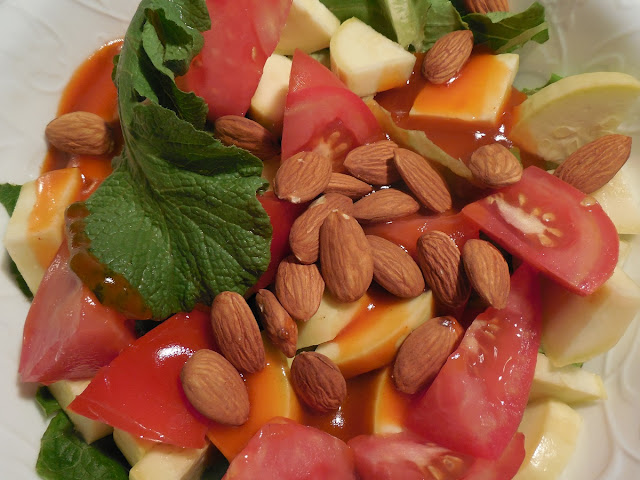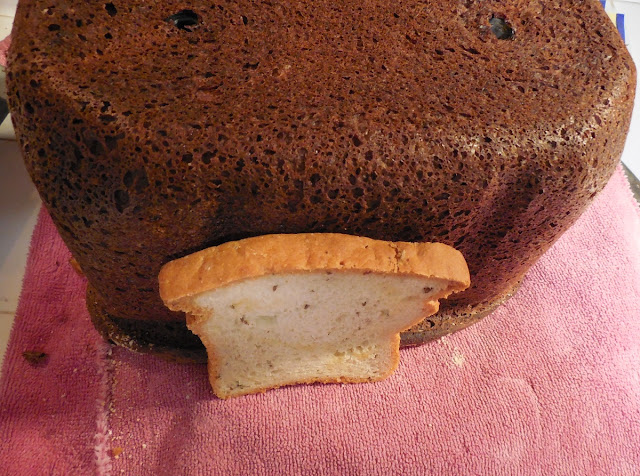Vitamin D - Old News, Right?
Chances are, you've already heard that there's a rash of Vitamin D deficiency. But did you know it's partly because a math error caused a large underestimate of how much we need every day? Did you know that the debate for how much we need daily ranges from 1000 IU, to 10,000 IU? Here are some annotated links that may help you find the right dose for you.
In my experience, D2 and D3 aren't the same. I take both of them and that helps me stay above 50 in my Vitamin D tests. When your skin makes vitamin D, it's a range of hormones that are made, not just one thing. Hormone is the correct term to describe Vitamin D. But realistically there are only three options for improving Vitamin D status: food/supplements, tanning booths, and sunshine.
You might not know that liver disease and belly fat are negative outcomes of Vitamin D deficiency. This is important because as my liver struggled more, it became obvious that I couldn't get much benefit from sunlight or tanning beds. Until my liver recovered with choline, NAC, dietary liver (ie. eating liver) and vitamin D supplements, my skin, liver and kidneys, couldn't effectively make useful vitamin D.
This article is 10-years old (archived), but it gives an overview of the complexities of vitamin D and how it becomes active and useful in the body. You can see the updated article here, but I think they removed a lot of info. It's a great basic article on the issues involved in Vitamin D research and health.
The liver has to convert the previtamin D, made in the skin, to a form the kidneys can use. Then the kidneys can make active vitamin D. This system can break down if the liver is sick. The liver requires vitamin D in a stored form for its own health, so there is a catch-22 that can occur if your intake or sunlight levels drop low enough for long enough (such as a long illness that keeps you indoors):
https://www.ncbi.nlm.nih.gov/pmc/articles/PMC5442077/
There was a math error which led to the RDA being far less than we actually need:
https://www.ncbi.nlm.nih.gov/pmc/articles/PMC4210929/
Excerpt: "The public health and clinical implications of the miscalculated RDA for vitamin D are serious. With the current recommendation of 600 IU, bone health objectives and disease and injury prevention targets will not be met."
Although we assume that scientists are replicating each other's work to check it, it's actually surprisingly rare, so here's the replication of the above data:
http://www.mdpi.com/2072-6643/7/3/1688/html
SCD is a stricter gluten free diet meant to help both small and large intestine. Their recommendations for Vitamin D:
https://scdlifestyle.com/2012/07/why-everyone-with-celiac-disease-needs-vitamin-d/
Comment: They recommend D3, and that's all you will find in stores anymore. Online you can find low dose D2, but if you are like me, and D3 for some reason doesn't work, ask for the 50k IU, once a week D2 pill that's by prescription only.
The Vitamin D Council recommends about 5,000 IU of Vitamin D per day for adults:
https://www.vitamindcouncil.org/about-vitamin-d/how-do-i-get-the-vitamin-d-my-body-needs/
Vitamin D from food.. a USDA nutrient database search:
https://fdc.nal.usda.gov/fdc-app.html#/?query=vitamin%20D
OLD Link, no longer works. USDA removed a lot of data from their site.
https://ndb.nal.usda.gov/ndb/nutrients/report/nutrientsfrm?max=25&offset=0&totCount=0&nutrient1=328&nutrient2=&nutrient3=&subset=0&sort=c&measureby=g
It's not heresy to go to a tanning salon for your Vitamin D. When I decided to try that, the staff were like "oh yeah, everybody does that, especially in winter." This is a good place to start off learning more about that directly from researchers:
https://www.ncbi.nlm.nih.gov/pubmed/20105173
If you prefer the natural sun, then you might have to supplement in the winter months anyway, but there's advice here from a well known figure in the self healing world, Dr. Weil. I think he's far too conservative and I usually double his vitamin recommendations, but in this case, caution is better:
https://www.drweil.com/vitamins-supplements-herbs/vitamins/how-much-sun-exposure-for-vitamin-d/
Some of the recent research of Dr. Holick (mentioned by Dr. Weil above), shows that even 15,000 IU per day (supplement) is not toxic:
https://www.ncbi.nlm.nih.gov/pmc/articles/PMC5402701/
1985 article about how aging affects the ability of the skin to make vitamin D (PDF) :
https://www.ncbi.nlm.nih.gov/pmc/articles/PMC424123/pdf/jcinvest00124-0254.pdf
In my experience, D2 and D3 aren't the same. I take both of them and that helps me stay above 50 in my Vitamin D tests. When your skin makes vitamin D, it's a range of hormones that are made, not just one thing. Hormone is the correct term to describe Vitamin D. But realistically there are only three options for improving Vitamin D status: food/supplements, tanning booths, and sunshine.
You might not know that liver disease and belly fat are negative outcomes of Vitamin D deficiency. This is important because as my liver struggled more, it became obvious that I couldn't get much benefit from sunlight or tanning beds. Until my liver recovered with choline, NAC, dietary liver (ie. eating liver) and vitamin D supplements, my skin, liver and kidneys, couldn't effectively make useful vitamin D.
This article is 10-years old (archived), but it gives an overview of the complexities of vitamin D and how it becomes active and useful in the body. You can see the updated article here, but I think they removed a lot of info. It's a great basic article on the issues involved in Vitamin D research and health.
The liver has to convert the previtamin D, made in the skin, to a form the kidneys can use. Then the kidneys can make active vitamin D. This system can break down if the liver is sick. The liver requires vitamin D in a stored form for its own health, so there is a catch-22 that can occur if your intake or sunlight levels drop low enough for long enough (such as a long illness that keeps you indoors):
https://www.ncbi.nlm.nih.gov/pmc/articles/PMC5442077/
There was a math error which led to the RDA being far less than we actually need:
https://www.ncbi.nlm.nih.gov/pmc/articles/PMC4210929/
Excerpt: "The public health and clinical implications of the miscalculated RDA for vitamin D are serious. With the current recommendation of 600 IU, bone health objectives and disease and injury prevention targets will not be met."
Although we assume that scientists are replicating each other's work to check it, it's actually surprisingly rare, so here's the replication of the above data:
http://www.mdpi.com/2072-6643/7/3/1688/html
SCD is a stricter gluten free diet meant to help both small and large intestine. Their recommendations for Vitamin D:
https://scdlifestyle.com/2012/07/why-everyone-with-celiac-disease-needs-vitamin-d/
Comment: They recommend D3, and that's all you will find in stores anymore. Online you can find low dose D2, but if you are like me, and D3 for some reason doesn't work, ask for the 50k IU, once a week D2 pill that's by prescription only.
The Vitamin D Council recommends about 5,000 IU of Vitamin D per day for adults:
https://www.vitamindcouncil.org/about-vitamin-d/how-do-i-get-the-vitamin-d-my-body-needs/
Vitamin D from food.. a USDA nutrient database search:
https://fdc.nal.usda.gov/fdc-app.html#/?query=vitamin%20D
OLD Link, no longer works. USDA removed a lot of data from their site.
https://ndb.nal.usda.gov/ndb/nutrients/report/nutrientsfrm?max=25&offset=0&totCount=0&nutrient1=328&nutrient2=&nutrient3=&subset=0&sort=c&measureby=g
It's not heresy to go to a tanning salon for your Vitamin D. When I decided to try that, the staff were like "oh yeah, everybody does that, especially in winter." This is a good place to start off learning more about that directly from researchers:
https://www.ncbi.nlm.nih.gov/pubmed/20105173
If you prefer the natural sun, then you might have to supplement in the winter months anyway, but there's advice here from a well known figure in the self healing world, Dr. Weil. I think he's far too conservative and I usually double his vitamin recommendations, but in this case, caution is better:
https://www.drweil.com/vitamins-supplements-herbs/vitamins/how-much-sun-exposure-for-vitamin-d/
Some of the recent research of Dr. Holick (mentioned by Dr. Weil above), shows that even 15,000 IU per day (supplement) is not toxic:
https://www.ncbi.nlm.nih.gov/pmc/articles/PMC5402701/
1985 article about how aging affects the ability of the skin to make vitamin D (PDF) :
https://www.ncbi.nlm.nih.gov/pmc/articles/PMC424123/pdf/jcinvest00124-0254.pdf





